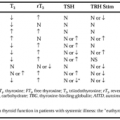STRUVITE STONES
Part of “CHAPTER 69 – NEPHROLITHIASIS“
PATHOGENESIS
Some bacteria, especially Proteus, Pseudomonas, Klebsiella, and Aerobactersp, possess urease, which is an enzyme that catalyzes the hydrolysis of urea to CO2 and ammonia. By accepting protons to become NH4+, the pH of the urine is raised. Therefore, the concentration of PO43– increases, and the ion associates with NH4+ and magnesium ion to form the crystalline struvite stone.1,52 Because the amounts of urea, phosphate, and magnesium generally are large, struvite stones grow rapidly to form staghorns. The other product of urea hydrolysis, CO2, is readily converted to HCO3– in the tubules. The HCO3–, in turn, becomes carbonate (CO32–) as it loses a proton to NH3. The CO32–ion crystallizes with calcium to form calcium carbonate, which helps to increase the mass of stone material, and accounts for the almost universal finding of calcium salts in struvite stones.53
Stay updated, free articles. Join our Telegram channel

Full access? Get Clinical Tree





